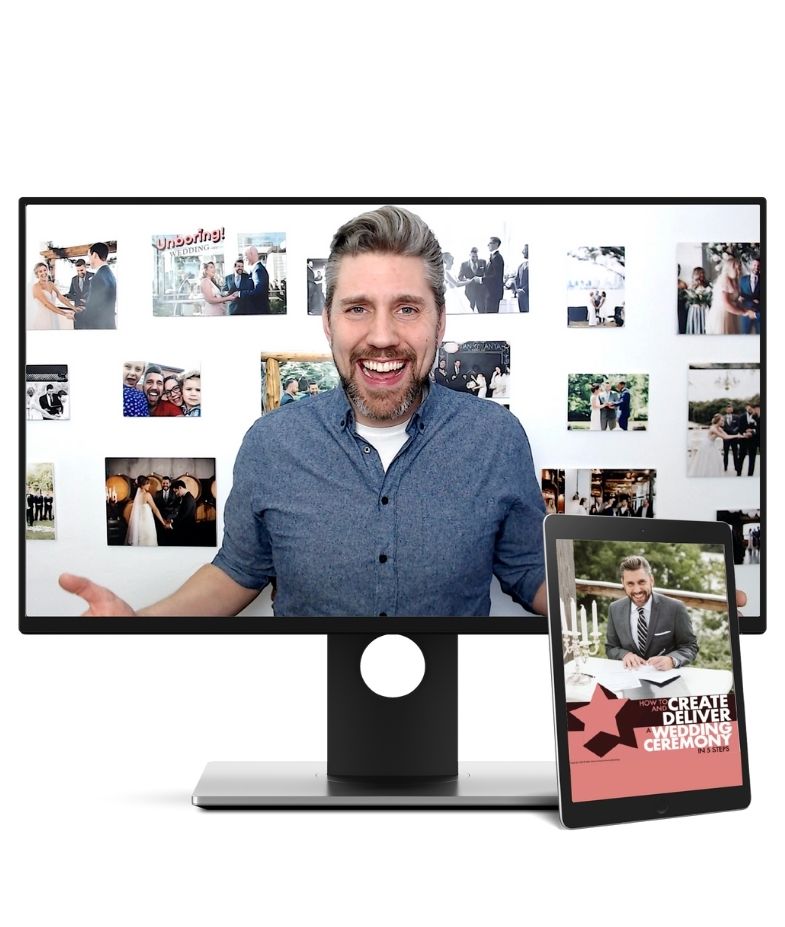We wedding officiants are going to meet several times with our couples in person. This is not a remote transaction, after all.
We’re looking to strike a balance between advising the wedding couple from our experience and expertise and giving them as much say and input about what they want for their wedding day. Another balance we’re looking for is that sweet spot between meeting too many times and not meeting enough.
How do we strike this balance? How many times do we need to meet with them?
A mentor of mine once told me, “Never hold a meeting just to validate your job.” Essentially, we don’t want to take up people’s time, energy, and resources conducting a meeting that’s less essential and efficient than it needs to be. Especially if we have the meeting just because we think we’re supposed to.
With that in mind, I’ve settled on a rhythm when it comes to meeting with my couples.
When I’m officiating for a couple, my magic number is 4.
I think we officiants only need to meet with the couple 4 times – and one of those is the actual wedding ceremony!
Couples seem relived when I tell them this. And I don’t take it personally! How many other wedding vendors do they need to see and talk to about all the details and minutiae related to their wedding day? Answer: a ton. And that means a lot of meetings.
So let’s not add to our couples’ wedding-planning burden. On the contrary, let’s make the meetings as minimal and high-impact for them as possible.
Here are the 4 whens and whys for how many times we wedding officiants need to meet with our wedding couples.
1. At the chemistry check
This meeting goes by several different names in the business world (i.e. pre-consult, discovery meeting, initial consultation), but with wedding couples, I call it our “chemistry check.”
When a couple sends me their enquiry either via Wedding Wire or UnboringWedding.com, I send them a standard-reply email telling them I’m available and that we should meet up.
I tell them where I’d like to get together (at a cafe just a couple of minutes from my house), and ask them to propose a few dates that work for them.
Here’s my actual copy from that email (that you can use):
“The first thing we could do is set up a chat – a half-hour-or-so, free, no-obligation ‘chemistry check’ for us to meet each other and discuss your hopes for your wedding. It’ll be a time to ask any questions you have about me, ceremonies in general, and dive deeper into the process of how we’ll bring your perfect ceremony into the world.”
When we settle on a date and meet up, we have that important conversation around what our mutual expectations are and whether we’ll make a good fit for each other. And I make sure this meetup is 100% successful every time.
If and when the couple decide to go with me, they agree to our contract, and pay their deposit, it’s on to nailing down a time for the next meeting: our wedding ceremony planning session.
2. At the wedding workshop
Good news: there’s no need to meet with the couple more than once to plan the ceremony. And there’s no need to meet with them for more than one hour.
One one-hour meeting is enough.
Trust me, they won’t think we haven’t set up enough times to meet. They won’t say, “But can’t we meet more times?” There’s no one this is better news for than the couple. (Have I mentioned how busy they are?) And if we’ve got a few weddings to officiate per weekend, then frankly, you can only meet once-per-couple anyways.
A more serious-minded name for this meeting is the “ceremony planning session.” I like to call it our “wedding workshop.” And I have it down to a fine science.
When the couple and I meet for our wedding workshop, I walk the couple through all the preliminary details of their day (like whether we need microphones for whom and how they’d like the signing table to be set up) and then we brainstorm our way through each element of the wedding ceremony.
I use a spreadsheet I’ve developed over the years. You might want to grab my free handy ceremony guide, sketch out the 10 parts of a basic wedding rehearsal in the guide, and then bring that into your workshop ready to walk your couple through all their options.
It only takes an hour because we don’t nail down everything right then and there. As I tell my couples: the purpose of the workshop is to “find out what we know, find out what we don’t know, and spend the next few weeks making the decisions that still need to be made.” I like to meet four to six weeks before the wedding day. That way, there’s plenty of time for the couple to decide on those last outstanding items on their list.
So we have our one-hour meeting, and the couple leaves with 80% of the details nailed down and a few bullet-point to-do items on a list. They’ll get back to me about those when they’ve hashed them out.
When we’re saying goodbye at the end of our hour, it’s “see you two at the rehearsal!”
3. At the wedding rehearsal
The third time we need to see the couple is at the wedding rehearsal – along with everyone else who’s a part of our ceremony.
I’ve written about this extensively in my post about the five parts of a fun and successful wedding rehearsal, and I’ll say it again here: I do not consider a rehearsal to be optional! It’s included in my fee, and it’s an “opt-out” service rather than an “opt-in.” Meaning: the default setting is that we’re having a rehearsal. If the couple don’t want one, they have to decline it without a discount.
I highly recommend that officiants take this approach to wedding rehearsals and include them by default. Why? Because a rehearsed wedding ceremony is exactly 459% more relaxed than an unrehearsed ceremony (by my unscientific, anecdotal calculations).
One of our most important roles on the wedding day is to help everyone be more relaxed. And there are two ways to accomplish this.
One way is to be a very unstressed, zen-like presence on the wedding day. Another way is to set everyone else up to be more relaxed before the day itself. How do we do that? By having a wedding rehearsal. It’s fun, it irons out all the kinks, it gets all the major ceremony players in the same room, and it makes the wedding day a whole lot better.
4. At the wedding ceremony
You already know this: we need to actually be there on the wedding day. The good news for everyone is that this counts as one of the 4 meetings!
So we met with our couple for the first time to get on the same page. We met a second time to plan the ceremony. We met a third time to practice the ceremony. And we met a fourth time to get married.
That’s all we need! 4 times is the magic number – the perfect balance we’re looking for to accomplish everything we need for the best ceremony ever.

